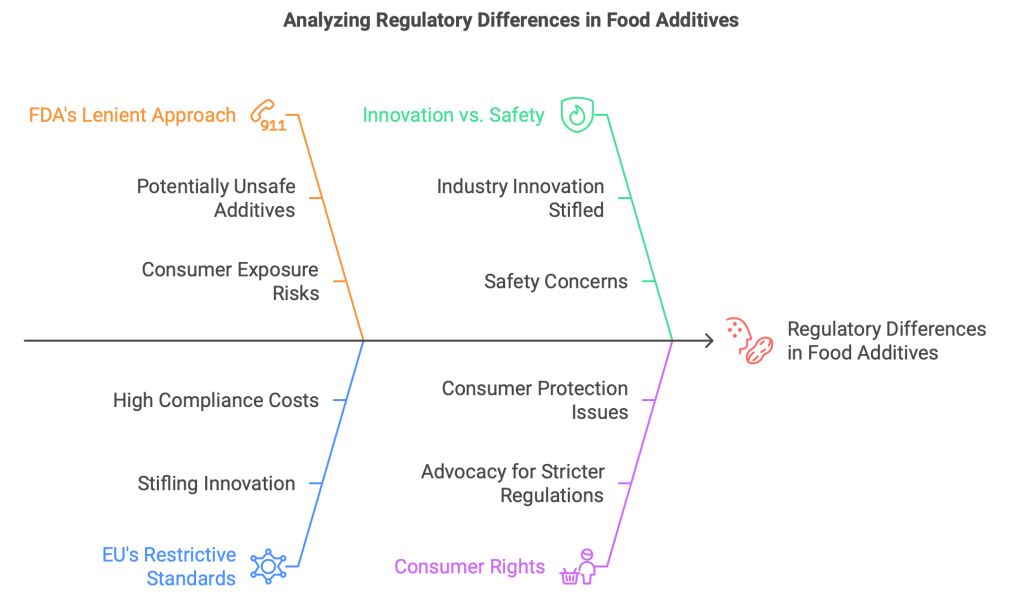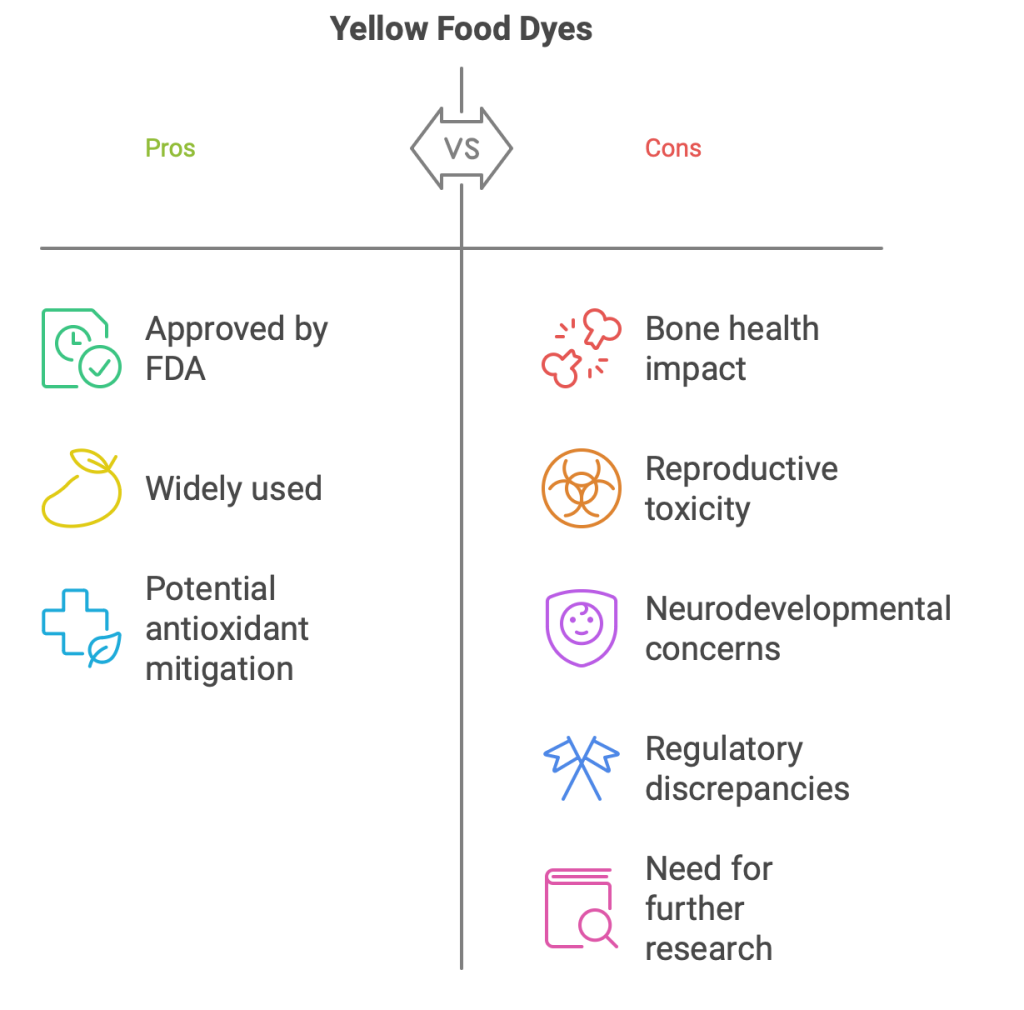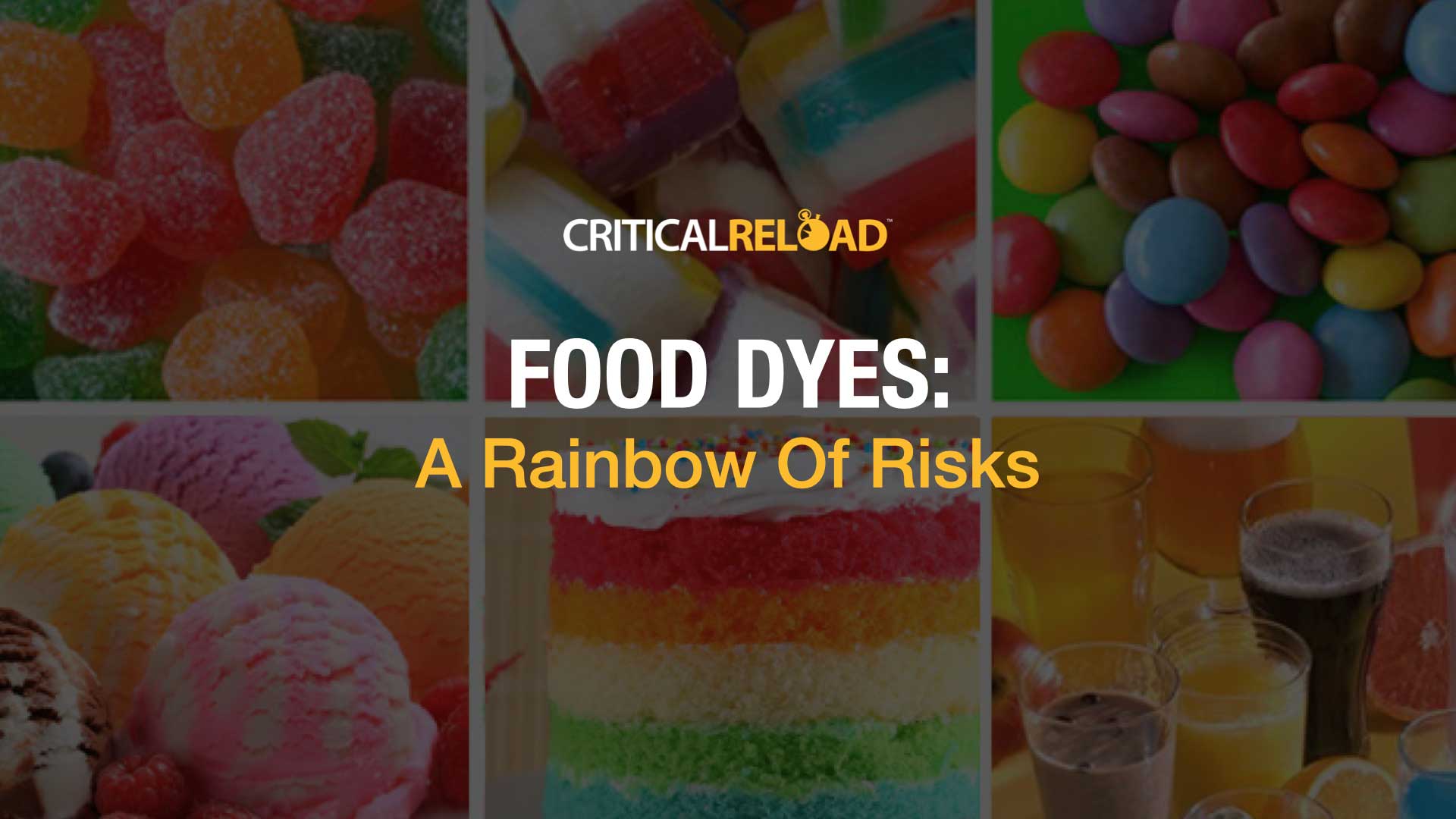In light of the current geopolitical climate and recent discussions about health policy under President Donald J. Trump, including the potential appointment of Robert F. Kennedy Jr. as Secretary of Health and Human Services, it is an opportune moment to critically examine the regulatory practices of the U.S. Food and Drug Administration (FDA). A key area of concern is the FDA’s approval of certain food additives and chemicals, many of which are restricted or banned in other countries due to health and safety concerns. Below is an overview of specific substances, their uses, and the contrasting international perspectives on their safety.
This Critical Reload blog is part of a series that explores the global regulatory landscape of food additives and their impact on health and safety. In this segment, we delve into the FDA’s approval process and international contrasts, with a focus on artificial food dyes and their associated risks.
US vs. Global Additive Regulations
FDA’s Approach
The regulatory landscape for food additives varies significantly between the United States and other countries, particularly the European Union. This discrepancy has led to ongoing debates about food safety standards and consumer protection.
In the United States, the Food and Drug Administration (FDA) is responsible for regulating food additives, including colorants. The FDA’s approach is based on scientific evidence and risk assessment, allowing the use of certain additives that are restricted or banned elsewhere (Nakuja et al., 2015). For instance, several yellow dyes approved by the FDA, such as tartrazine (Yellow #5) and sunset yellow (Yellow #6), are subject to stricter regulations or outright bans in other nations.
European Union Standards
The European Union, in contrast, takes a more precautionary approach to food additives. The European Food Safety Authority (EFSA) has implemented stricter regulations on synthetic food colorants, requiring warning labels on products containing certain dyes, including some yellow colorants. This divergence in regulatory approaches has led to situations where products deemed safe for consumption in the US may not meet EU standards (Nakuja et al., 2015).
These regulatory differences extend beyond just colorants. For example, potassium bromate, used in bread production in the US, is banned in the EU and many other countries due to potential carcinogenic effects. Similarly, brominated vegetable oil (BVO), used in some citrus-flavored beverages in the US, is prohibited in the EU and Japan (Borges, 2012).
Implications for Global Trade and Manufacturing
The disparity in regulations has significant implications for international trade and food manufacturing. Companies aiming to sell products globally often need to reformulate their products to comply with varying international standards. This can lead to increased costs and complexity in production and distribution (Nakuja et al., 2015).
Moreover, these regulatory differences have sparked debates about food safety and consumer rights. Critics argue that the FDA’s approach may be too lenient, potentially exposing US consumers to additives deemed unsafe by other regulatory bodies. Conversely, proponents of the US system argue that it is based on sound scientific evidence and that overly restrictive regulations could stifle innovation in the food industry (Borges, 2012; Nakuja et al., 2015).

Balancing Consumer Health and Global Trade
The debate surrounding food additive regulations highlights the complex balance between ensuring food safety, promoting industry innovation, and facilitating international trade. As scientific understanding of food additives continues to evolve, regulatory bodies worldwide face the ongoing challenge of adapting their policies to protect public health while supporting a dynamic global food market.
Key Listings of Food Additives and Chemicals
Artificial Food Dyes
The FDA approves several synthetic food dyes that are widely used in processed foods, beverages, and confectionery products in the U.S. However, these additives are restricted or banned in other countries, particularly in the European Union, due to health concerns. Notable examples include:
- Yellow #5 (Tartrazine)
- Yellow #6 (Sunset Yellow)
- Red #40 (Allura Red)
- Blue #1 (Brilliant Blue)
- Blue #2 (Indigo Carmine)
Health Risks of Yellow Dyes
Yellow Food Dyes Under Scrutiny
Yellow food dyes, particularly tartrazine (Yellow #5) and sunset yellow (Yellow #6), have been the subject of extensive research due to concerns about their potential health risks. Studies have shown that these synthetic colorants may have adverse effects on various physiological systems.
Tartrazine and Bone Health
Tartrazine, when administered to rats over a 60-day period, was found to alter the chemical and mineral composition of skeletal bones. This effect was observed at doses of 750 and 1500 mg/kg body weight, suggesting that prolonged exposure to this dye could potentially impact bone health (Luzin et al., 2020). The study also demonstrated that the use of Mexidol, an antioxidant drug, could partially mitigate these negative effects, indicating the potential role of oxidative stress in tartrazine-induced bone changes.
Reproductive Concerns Linked to Sunset Yellow
Sunset yellow has been associated with reproductive toxicity in animal studies. Research on male Sprague-Dawley rats revealed that exposure to this dye could adversely affect testicular function (Dara et al., 2024). While the exact mechanisms are still being investigated, these findings raise concerns about the potential impact of yellow food dyes on human reproductive health.
Neurodevelopmental Concerns
The relationship between food colorants and neurodevelopmental disorders has also been a topic of scientific inquiry. A meta-analysis examining the link between food colors and autism spectrum disorder (ASD) found a significant association between artificial food color consumption and ASD symptoms (Bakthavachalu et al., 2020). However, it’s important to note that this relationship is complex and requires further research to establish causality.
Need for Research and Regulation
Despite these concerns, the FDA continues to approve several yellow dyes for use in food products, based on their assessment of available scientific evidence. The discrepancy between U.S. regulations and those of other countries, particularly the European Union, underscores the ongoing debate about the safety of these additives and the need for continued research and regulatory scrutiny.

Brand-Name Foods Containing Dyes
Yellow #5 (Tartrazine)
- Froot Loops
- Doritos
- Lemon Jello
- Starburst
- M&Ms
- Knorr Chicken Bouillon
- Mountain Dew (removed by 2020)
Yellow #6 (Sunset Yellow)
- Doritos
- Skittles
- Starburst
- M&Ms
- Mountain Dew (removed by 2020)
Red #40 (Allura Red)
- Skittles
- Doritos
- Twizzlers
- M&Ms
- Yoplait Kool-Aid Tropical Punch Yogurt
- Yoplait Starburst Yogurt
- Lucky Charms
Blue #1 (Brilliant Blue)
- M&Ms
- Gatorade
- Froot Loops
- Trix
- Fruity Pebbles
- Lucky Charms
Blue #2 (Indigo Carmine)
- M&Ms
- Skittles
- Breakfast cereals
- Sports drinks
- Energy drinks
- Ice creams
- Sorbets
- Dairy foods
- Snack foods
- Baked goods
Conclusion
The approval and regulation of food additives in the United States remain a contentious topic, highlighting stark contrasts with international practices. From artificial dyes to broader safety concerns, the implications for public health and global trade are profound. This series aims to shed light on these critical issues, fostering informed discussions about food safety.
In the next segment of this series, we will explore brominated vegetable oil (BVO), an emulsifier used in some citrus-flavored soft drinks in the U.S. but banned in the European Union and Japan due to concerns about its potential effects on thyroid hormones and fertility. Stay tuned to delve deeper into this controversial additive and its global implications.
References
- Bakthavachalu, P., Kannan, S. M., & Qoronfleh, M. W. (2020). Food color and autism: A meta-analysis. Advances in Neurobiology, 24, 481–504. https://doi.org/10.1007/978-3-030-30402-7_15
- Borges, T. D. (2012). Similarities and differences between Brazilian and American regulations on dietary supplements. Semantic Scholar. Retrieved November 28, 2024, from https://www.semanticscholar.org/paper/Similaridades-e-diverg%C3%AAncias-entre-as-normas-e-que-Borges/7229206b84101634fd7e95f7ec6ef8acd7b7e4e3
- Contact Dermatitis Institute. (n.d.). Tartrazine. Retrieved November 28, 2024, from https://www.contactdermatitisinstitute.com/tartrazine.php
- Culinary Solvent. (n.d.). Understanding artificial blue dyes and side effects. Retrieved November 28, 2024, from https://culinarysolvent.com/blogs/alcohol-for-chefs/understanding-artificial-blue-dyes-and-side-effects
- Dara, M., Nazari, F., Dianatpour, M., Karimi, F., Alaee, S., Shirazi, R., & Khodabandeh, Z. (2024). Effect of sunset yellow on testis: Molecular evaluation, and protective role of coenzyme Q10 in male Sprague-Dawley rats. Cell Biochemistry and Biophysics, 82(3), 2827–2835. https://doi.org/10.1007/s12013-024-01398-3
- Delishably. (n.d.). Foods containing Yellow Dye 5 (Tartrazine). Retrieved November 28, 2024, from https://delishably.com/food-industry/Foods-Containing-Yellow-Dye-5-Tartrazine
- Luzin, V. I., Fastova, O. N., Tverskoi, A. V., Morozov, V. N., Morozova, E. N., & Tverskaya, A. (2020). Pharmacological correction of changes in the chemical and mineral composition of rats’ skeletal bones by Mexidol after 60 days of tartrazine administration. Eurasian Journal of Biosciences, 14, 3069–3072.
- Nakuja, T., Akhand, M., Hobbs, J. E., & Kerr, W. A. (2015). Evolving US food safety regulations and international competitors: Implementation dynamics. International Journal on Food System Dynamics, 6, 259–268.
- Rupa Health. (n.d.). Indigo Carmine (Blue 2): Dye safety, uses, and side effects. Retrieved November 28, 2024, from https://www.rupahealth.com/post/indigo-carmine-blue-2-dye-safety-uses-and-side-effects
- Rupa Health. (n.d.). The truth about Red Dye 40. Retrieved November 28, 2024, from https://www.rupahealth.com/post/the-truth-about-red-dye-40
- SafeMama. (n.d.). What is Red Dye 40 found in? Retrieved November 28, 2024, from https://safemama.com/what-is-red-dye-40-found-in/
- WebMD. (n.d.). What to know about Yellow 5 food dye. Retrieved November 28, 2024, from https://www.webmd.com/diet/what-to-know-yellow-5-food-dye
